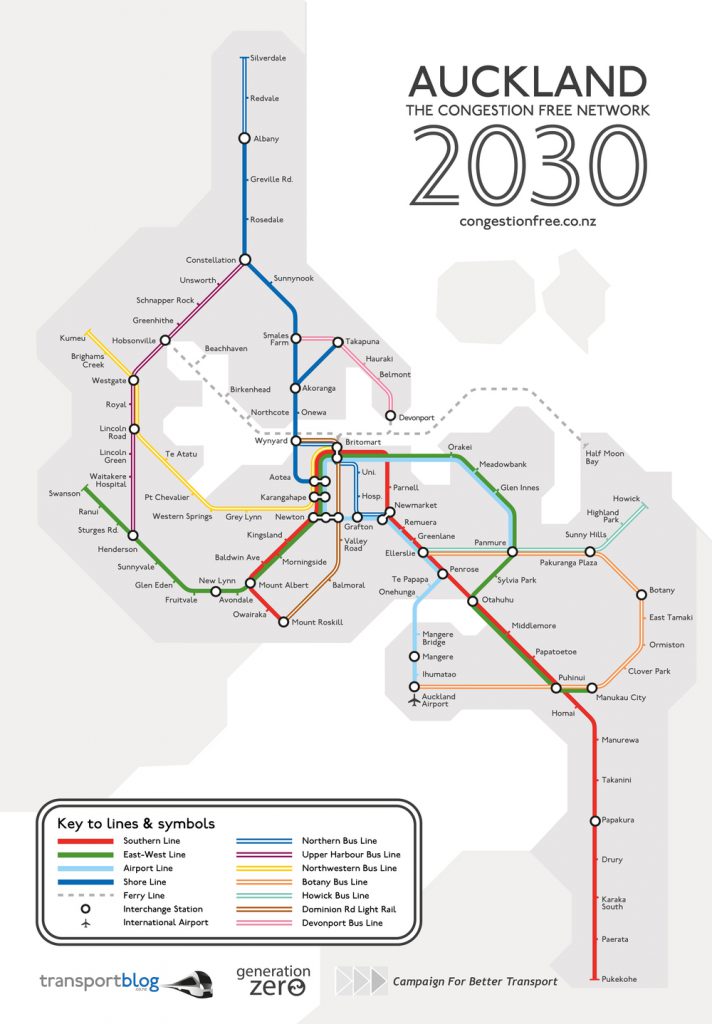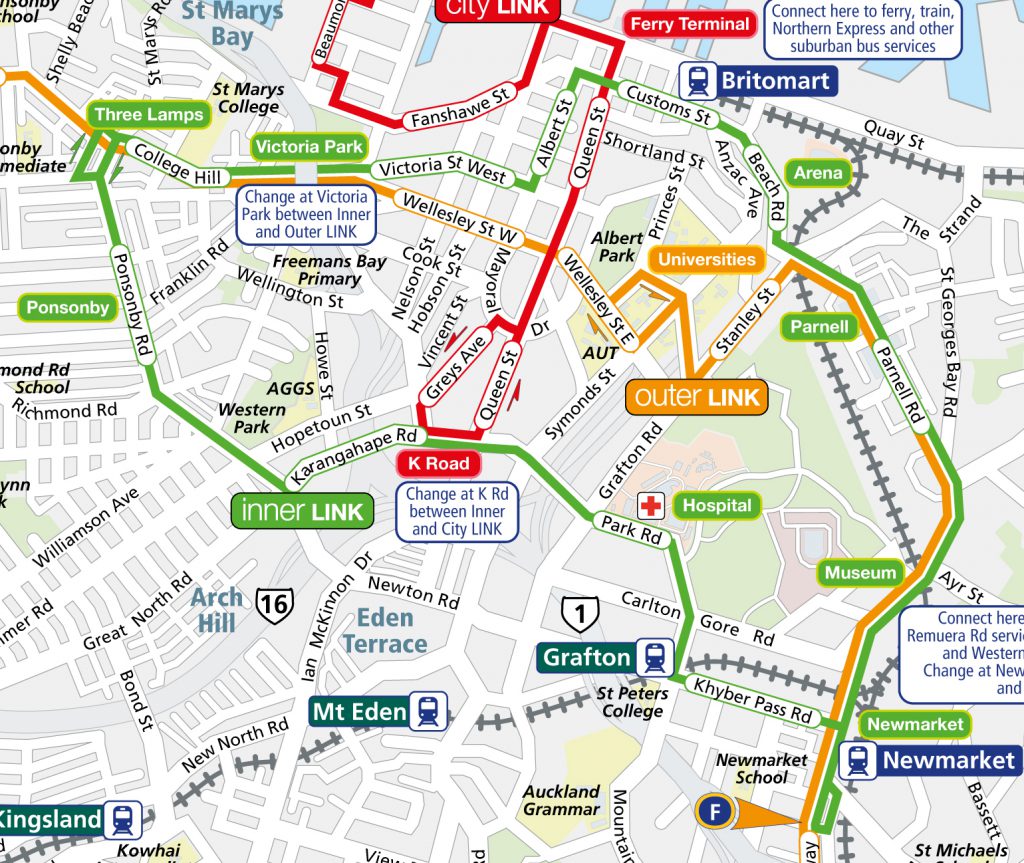A quick note: My thinking on light rail is heavily informed by Auckland Transport‘s published investigations and reports, and also by following Transport Blog‘s many discussions of the subject over years. I’m also a believer in some of the promises of the Congestion Free Network, but their ideas lean more on buses and less on light rail than I’d prefer.
The image above is one of Auckland Transport’s proposed future transport network maps for 2045, the four spurs down through the central isthmus (to Owairaka, Mount Roskill, Three Kings, and Onehunga) and one line across the harbour to Akoranga are light rail lines.
Here’s the Congestion Free Network proposal for 2030:

You can see they also plan for a new Light rail line, though this is on a different time scale from Auckland transports proposal above, so they only have a single light rail line, this one going from Queen St, down Dominion Rd through Balmoral and terminating at Mount Roskill, where it would join up with the Southern Line rail line.
These are both fine ideas, and very important long term plans, but my addition is that we also put in a tram line essentially replacing the current Inner Link route.

This would provide us with a light rail link fed from Britomart at the bottom of town, through Three Lamps, along Ponsonby Rd, and along K Rd, where we could allow transfers to the rail network via the new City Rail Link station, then continue past the hospital, through Newmarket, past the museum and down through Parnell back to Britomart. The only major stops it doesn’t go directly past Auckland University or AUT, so perhaps some slight deviation could be made.
Now yes we do of course already have a bus running this route, but these roads will become ever more congested over coming decades and trams/light rail have higher throughput than buses, they’re simply more efficient, so I feel like this would be a really fantastic journey that would be taken by thousands every day, what do you think?
A few more notes: There is a large and important distinction to be made between trams and light rail, trams are at street level and share space with other road users, light rail can look quite similar but has its own space – either a dedicated right of way, or preferably physical/grade separation from other traffic.
This means light rail can move much faster than surrounding traffic and isn’t bound by congestion in other transport modes. Separate light rail has three times the maximum capacity of a dedicated Busway, at 18,000 passengers per hour – which is to say that you’d have to put in three northern express busways to match the throughput of a light rail pair, even though light rail could be installed in the same space taken up by the busway.
It’s really efficient. This means you can get more people where they want to go, on time, and in comfort. And by design it can be very safe for other road users (naturally great care needs to be taken in how you design any intersections where other traffic crosses over the lines).
If you’ve only ridden the Wynyard Quarter or Motat trams then please know light rail is nothing like those. They’re historical artifacts and would be a cramped, pokey, and slow way to get around. I can’t even fit my knees in the seats and I’m only 6 foot tall. No one advocating for light rail is advocating for that kind of tram to be used for anything other than a curiosity for tourists.
I’ve used modern light rail in Japan, Belgium, and Australia. It is fantastic, it’s very fast and very comfortable. In some respects it isn’t all that different from from taking a modern train, except that it costs a lot less to install the infrastructure.

